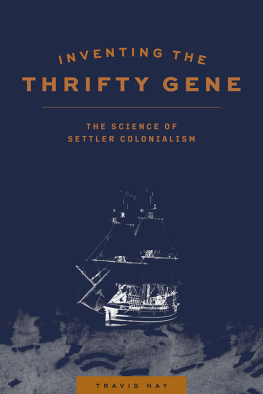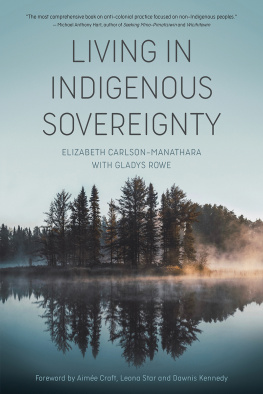
In this story of the Salton Sea, Voyles paints an unconventional picture of a landscape that has been subject to every kind of abuse the settler state can inflict. It is a cautionary tale that links colonization of people with colonization of nature, refusing to see the two as different. And it reminds us that when we think spatially, centering land in our social narratives, we can more clearly see the inequities imposed by the settler state on racialized others. The Settler Sea is a delight to read, mixing metaphor with fact in a way that reflects the contradictions and ambiguities of the Salton Sea.
Dina Gilio-Whitaker, author of As Long as Grass Grows: The Indigenous Fight for Environmental Justice from Colonization to Standing Rock
The Salton Sea may seem an odd place to interrogate the history of a settler society that dispossessed Native peoples and transformed the American West, but as Traci Voyles brilliantly shows us, all of the toxic pathologies of the colonial have flowed into and concentrated in this closed desert sink, only to become exposed to view as the shimmering settler dream evaporates. The Settler Sea is what the next generation of environmental history should look like.
Paul S. Sutter, author of Let Us Now Praise Famous Gullies: Providence Canyon and the Soils of the South
Deeply researched and elegantly written.... Through the themes of settler colonialism and border studies, The Settler Sea reveals the ways that the exploitation of the environment in the name of food security through industrial agriculture went hand-in-glove with exploitation of the people and their labor in the Imperial Valley. The result is that the Salton Sea today is both a toxic wasteland from overuse as well as an indispensable natural resource that has endured despite the onslaught.
Maria E. Montoya, author of Translating Property: The Maxwell Land Grant and the Conflict over Land in the American West, 18401900
Traci Brynne Voyles masterfully centers settler colonialism in environmental history, particularly the ways that landscapes and built environments, such as the Salton Sea and its related components, are refigured through settler colonialism to produce settler colonial outcomes. Voyles adeptly draws on many analytical angles to reveal the complexity of the Salton Sea, its complicated ecologies, and its problems.
Joshua L. Reid, author of The Sea Is My Country: The Maritime World of the Makahs
Many Wests
Series Editors:
Thomas G. Andrews, University of Colorado
Ari Kelman, University of California, Davis
Amy Lonetree, University of California, Santa Cruz
Mary E. Mendoza, Pennsylvania State University
Christina Snyder, Pennsylvania State University
The Settler Sea
Californias Salton Sea and the Consequences of Colonialism
Traci Brynne Voyles
University of Nebraska Press | Lincoln
2021 by the Board of Regents of the University of Nebraska
Cover designed by University of Nebraska Press; cover artwork Andrew Dickson.
Acknowledgments for the use of previously published material appear in , which constitutes an extension of the copyright page.
All rights reserved
Publication of this volume was assisted by the McCabe Greer Book Manuscript Workshop, the George and Ann Richards Civil War Era Center, and the Pennsylvania State University Department of History.
Library of Congress Cataloging-in-Publication Data
Names: Voyles, Traci Brynne, author.
Title: The settler sea: Californias Salton Sea and the consequences of colonialism / Traci Brynne Voyles.
Description: Lincoln: University of Nebraska Press, [2021] | Series: Many wests | Includes bibliographical references and index.
Identifiers: LCCN 2021006475
ISBN 9781496216731 (hardback)
ISBN 9781496229618 (epub)
ISBN 9781496229625 (pdf)
Subjects: LCSH : Salton Sea (Calif.)Environmental conditions. | Salton Sea (Calif.)Political aspects. | Salton Sea (Calif.)History. | BISAC : HISTORY / United States / State & Local / West ( AK , CA , CO , HI , ID , MT , NV , UT , WY ) | NATURE / Ecosystems & Habitats / Oceans & Seas
Classification: LCC GE 155. C 2 V 69 2021 | DDC 304.209794/99dc23
LC record available at https://lccn.loc.gov/2021006475
The publisher does not have any control over and does not assume any responsibility for author or third-party websites or their content.
Contents
I began writing this book with a newborn in my arms and finished it during a pandemic. Every page owes something to the people around me who took care of me, my work, and my family in the years in between.
I thank the colleagues who lifted me up during my time at Loyola Marymount University ( LMU ): Stella Oh, Mairead Sullivan, Sina Kramer, Nicolas Rosenthal, Eliza Rodriguez y Gibson, Jennifer Williams, Elizabeth Drummond, Andrew Dilts, Tahereh Aghdasifar, Brian Treanor, Jennifer Moorman, Marne Campbell, Amy Woodson Boulton, and Carla Bittel. Upon moving to the University of Oklahoma ( OU ), I found new depths of collegial sustenance; thank you to David Wrobel, Jill Irvine, Elyssa Faison, Megan Sibbett, Lisa Funnell, Carrie Schroeder, Jennifer Davis, Kathleen Brosnan, Kalenda Eaton, Sandy Holgun, Raymond Orr, Laura Harjo, Zev Trachtenberg, Karlos Hill, Jennifer Holland, and Sarah Hines. I could not have done anything at OU without the expertise of Susy Jorgenson. Special thanks to Mark Boxell, who lent a hand to the project at a crucial juncture, and to Sara Raines and Maureen Bemko, both of whom went above and beyond to bring the book to fruition.
My community of scholars outside of LMU and OU made this effortand all my workjoyful. I thank Dina Gilio-Whitaker, Natale Zappia, Chris Finley, Maile Arvin, Finis Dunaway, Ross Frank, Lisa Sun-Hee Park, Matt Basso, and Susan Burch. Karen Leong offered indispensable comments at a critical stage, as did Elyssa Faison. Will Madrigal Jr. shared important guidance, spot-on book recommendations, and great conversations about Cahuilla history. This book owes much of its inspiration (and more than a few of its words) to Elaine Nelson, Cathleen Cahill, Virginia Scharff, Ellen Stroud, Kathy Morse, Christina Snyder, and Mary E. Mendoza. Major frameworks of this project emerged through the rich conversations that took place at the 2016 meeting of the Environmental Justice/Climate Justice Hub at the University of Santa Barbara, particularly with David Naguib Pellow, John Foran, Julie Sze, Joni Adamson, Kari Norgaard, and ann-elise lewallen.
Special thanks to LMU s Academy for Catholic Thought and Imagination for awarding me a fellowship that allowed me to complete crucial portions of the research. I am also grateful to the selection committee for the Graves Award in the Humanities for finding this project worthy of their generous support.
The bulk of this book was written when I was living on the homelands of Tongva peoples and researching on the homelands of the Cahuilla, Kumeyaay, Quechan, and Paymkawichum Nations. I thank the peoples of those nations for their continued practices of sovereignty and self-determination in the context of ongoing settler colonialism. I am grateful to the Executive Board of the Malki Museum, particularly Amanda Castro and Andie Geyer, for their generous and patient help with this project. I appreciate conversations with Sandonne Goad, tribal council chairwoman of the Gabrielino/Tongva Nation, and Edgar Perez of the Gabrielino/Tongva Nation. I am grateful to everyone who fielded my calls and emails at Torres Martinez and at the Sonny Bono National Wildlife Refuge. Special gratitude goes to Selina Santillanes and Hans Bauman for sharing their time and expertise. Thank you to the members of the California Indian Basketweavers Association, who gave permission for me to quote from their archives.
Next page










